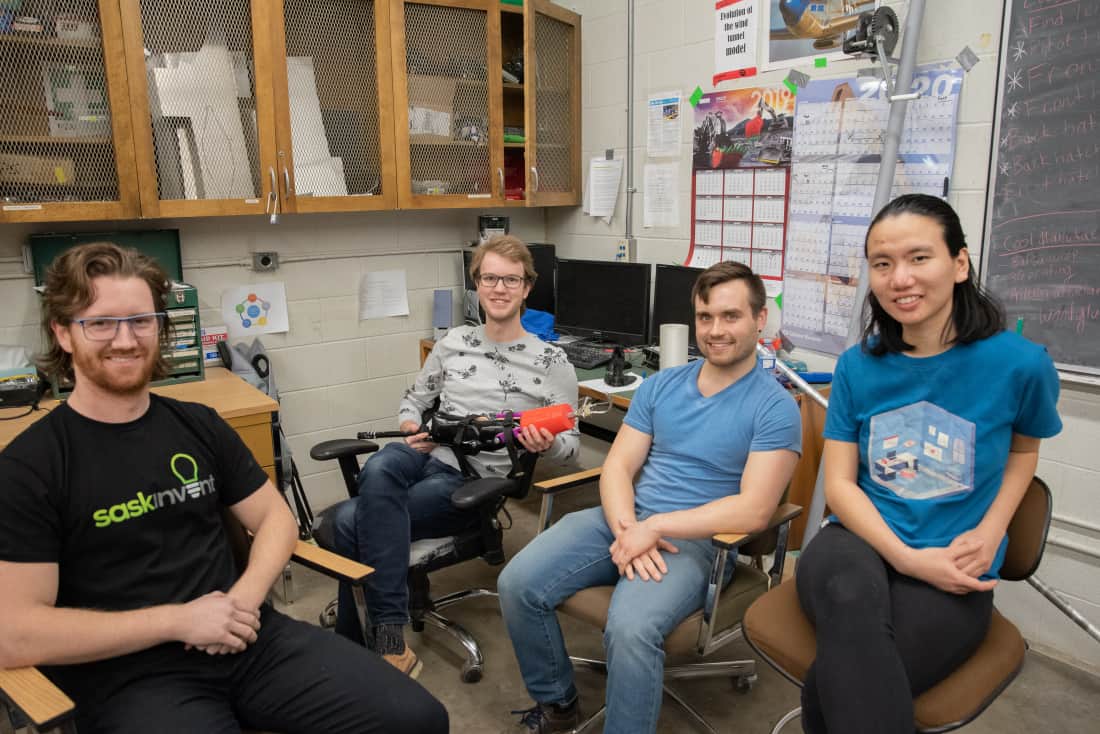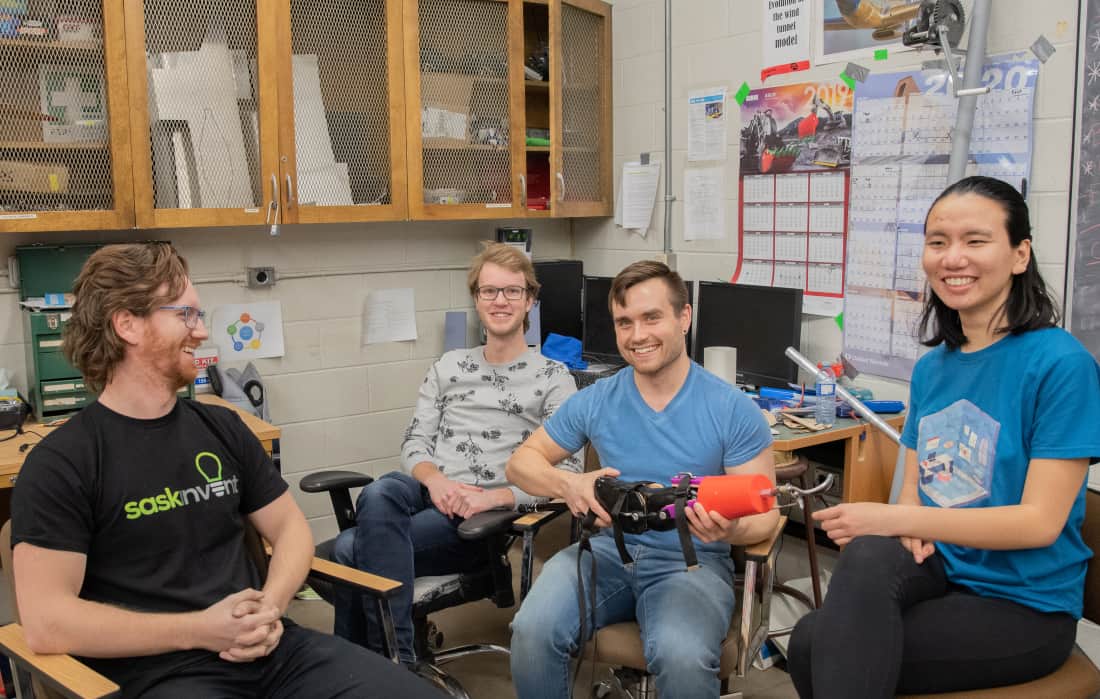
The student group SaskInvent is tackling bigger-scale projects, according to their president, Richard Gauvreau. He says that they have reached a point where their innovations are more than just “cool ideas.”
SaskInvent is a multidisciplinary, student-run organization with a mandate to “[build] innovative biomedical technologies that help people.” With partnerships and a growing list of finished projects under their belt, the group has found success in designing innovative products by fusing together engineering principles and biological sciences.
The campus group was established in 2014 and has grown to 55 members on the team. The members are divided into groups based on the project they are working on, which at the moment includes a hand rehabilitation device and a low-cost, repairable IV pump.
Another primary assignment the team has is a prosthetic arm project, which began after the group was contacted by the granddaughter of a Saskatchewan farmer, who had lost his arm in a farming accident.
“[It’s] a prosthetic for an individual who’s having a tough time using farm equipment,” Gauvreau said. “They would like to use a lot of manual labour, and it’s hard to find a prosthetic that would allow that. A lot of [prosthetics] have very strict requirements on how they’re used.”
Perhaps the most popular project they have finished so far is a 3D model of a brain at the Royal University Hospital. The model was created to help diagnose a patient’s condition as it is easier to navigate than with 2D prints.
Gauvreau says that the group is looking forward to building on this growth.
“We’ve reached that point where we’ve completed some projects, [and] had multiple demonstrations,” Gauvreau said. “We’re at the point now where we’re being approached for projects, so it’s really nice to have a little bit more scale introduced to what we’re doing.”
Gauvreau is an engineering student, as are most members of SaskInvent. However, the organization’s upcoming collaborations will potentially bring more students from other colleges into the group. SaskInvent uses concepts such as mechanics and robotics to develop solutions to medical problems, and they hope to add more subject areas to their multidisciplinary approach.

“With our collaboration efforts into things like the [colleges] of medicine and veterinary medicine, we’re hoping to see larger membership rates from those other colleges, but it’s really just a learning process as we go through this,” Gauvreau said.
SaskInvent’s growing popularity has brought the group to a turning point. With their size and variety of disciplines represented among members increasing, Gauvreau says the group has reached a new level.
“We’ve had a really big switch from being a very small group to one that has a little bit more interest,” Gauvreau said. “We’re translating from what would be more of an amateur group to something that you would hopefully put on the same level as Huskie Formula Racing or the University of Saskatchewan Space Design Team.”
The group’s current growth helps with more than just their status. According to Gauvreau, it also helps them obtain the funds to keep growing.
“It helps in terms of funding because we’ve been funding through a lot of fundraisers and collecting money,” Gauvreau said. “We’re doing a lot with very little money, so even small contributions from colleges really helps us scale up.”
Gauvreau’s experience with SaskInvent has been nothing but awesome. Before he was president, he was a team leader for a couple of projects and he says that “it was so much fun.” He urges students to give the team a try.
“I’d say this has really opened some doors for me,” Gauvreau said. “It’s honestly the members that are a part of the group that really make it what it is… So if people are willing to get involved and just take a little bit of time to get started, it’s way more fun than they think it is.”
—
J.C. Balicanta Narag/ Copy Editor
Photos: Victoria Becker/ Photo Editor